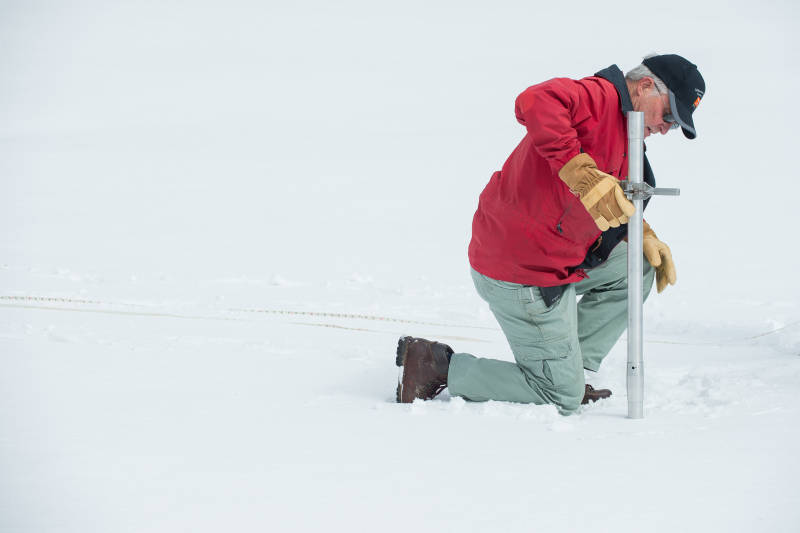The “April 1” snow survey in the Sierra Nevada is always anxiously awaited, in the truest sense of the term. Early April is when the snowpack is generally reckoned to have peaked and the spring melt season is upon us. If there isn’t sufficient snow by now to carry California through its parched summer, there likely won’t be.
This year’s April1 survey (done on March 30 this year for arcane reasons) was a good news/bad news affair.
The good news is that water content (which is what they actually measure, not accumulation) came in at 87 percent of average — that’s a far cry from last year at this time, when Governor Jerry Brown stood on a barren mountainside along Highway 50 to announce California’s first-ever statewide mandatory water restrictions. The snowpack on that date was virtually non-existent, shattering records for “bad” at about 5 percent of normal.
The bad news is that same 87 percent of average, which is to put it another way, 13 percent below normal. After four years of drought, hydrologists have warned, that’s not going to cut it.
“An average snowpack wouldn’t solve the hole we’re in from four years of dry soil moistures and low reservoirs, and overpumped groundwater,” says Peter Gleick, a hydrologist and head of the Oakland-based Pacific Institute. “We really needed more than average — a lot more than average.” (There’s more from Gleick on why we should expect more disappointing snowpacks in our recent post.)
